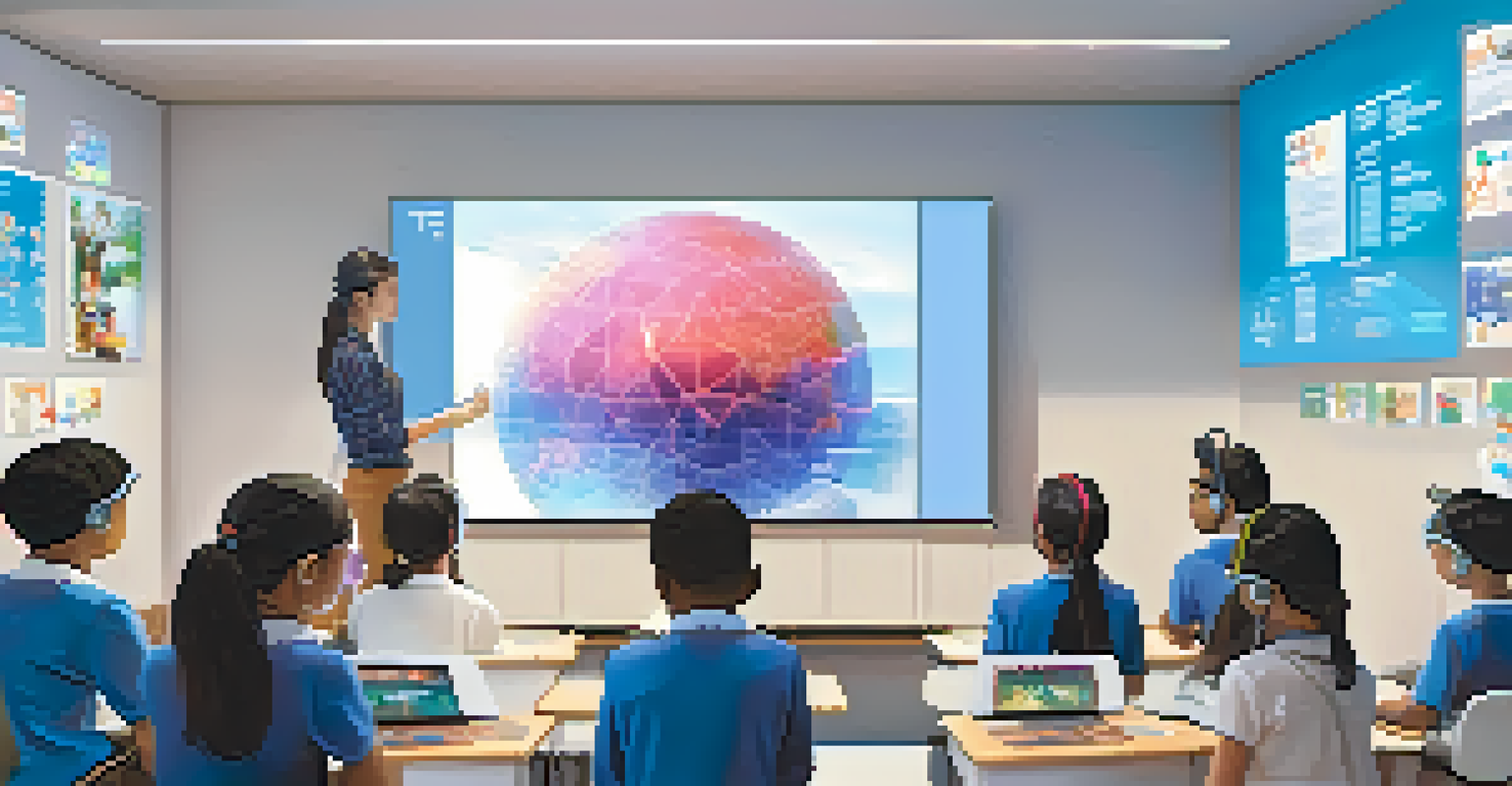Trends in Language Learning Apps: Enhancing Communication Skills

The Rise of Mobile Language Learning Apps
In recent years, mobile language learning apps have surged in popularity, making language acquisition more accessible than ever. With just a smartphone and an internet connection, learners can dive into new languages at their own pace, anytime and anywhere. This shift towards mobile learning has democratized education, allowing users from various backgrounds to enhance their communication skills.
The limits of my language mean the limits of my world.
For instance, apps like Duolingo and Babbel have transformed traditional learning methods by incorporating gamification and interactive content. This approach not only makes the learning process enjoyable but also encourages regular practice and retention. As a result, users are more likely to stick with their language goals and see improvements in their communication abilities.
Moreover, these apps often include features like speech recognition and conversation simulations, which help users practice real-life dialogues. By mimicking authentic interactions, learners can build confidence in their speaking skills, ultimately enhancing their ability to engage in meaningful conversations.
Personalized Learning Experiences
One of the standout trends in language learning apps is the emphasis on personalization. Many apps now utilize algorithms to tailor lessons to individual users, considering their skill levels, interests, and learning styles. This customization ensures that learners remain engaged and motivated throughout their language journey.

For example, apps like Rosetta Stone and Memrise adapt content based on user performance, offering targeted exercises that address specific weaknesses. This targeted approach not only saves time but also enhances the effectiveness of learning, allowing users to focus on areas that need improvement. As a result, learners can make significant strides in their communication skills more efficiently.
Personalized Learning Experiences
Language learning apps now use algorithms to tailor lessons, ensuring greater engagement and efficiency for users.
Additionally, personalized feedback and progress tracking features keep users informed about their growth and areas for improvement. This accountability can be a powerful motivator, encouraging learners to stay committed to their language goals.
Community Engagement and Social Learning
Another trend gaining traction in language learning apps is the incorporation of community features. Many platforms now allow users to connect with fellow learners and native speakers, fostering a sense of belonging and support. This social aspect not only enriches the learning experience but also provides valuable opportunities for practicing communication skills in a real-world context.
Language is the road map of a culture. It tells you where its people come from and where they are going.
Apps like HelloTalk and Tandem exemplify this trend by facilitating language exchanges between users. Learners can chat, voice call, or even video call with others, allowing them to apply their skills in practical situations. This real-time interaction enhances fluency and builds the confidence needed for effective communication.
By engaging with a community of learners, users can also share tips, resources, and experiences, creating a collaborative learning environment. This sense of camaraderie can be incredibly motivating, pushing individuals to step outside their comfort zones and actively participate in conversations.
Integrating Artificial Intelligence for Enhanced Learning
The integration of artificial intelligence (AI) in language learning apps has opened doors to innovative learning experiences. AI-powered features, such as chatbots and virtual tutors, can simulate conversations and provide immediate feedback, making learning more interactive. This technology allows learners to practice speaking and writing in a safe environment, enhancing their communication skills without the fear of judgment.
For instance, apps like Busuu and Lingoda employ AI to analyze user input and respond accordingly, creating a dynamic learning experience. This adaptive technology not only helps users grasp complex language concepts but also encourages them to express themselves more freely.
Community Engagement Enhances Learning
Incorporating social features allows learners to connect with peers and native speakers, enriching the language learning experience.
Moreover, AI can identify patterns in user behavior, enabling apps to offer personalized recommendations and targeted exercises. This level of customization helps learners address specific challenges and fosters a deeper understanding of the language, ultimately improving their ability to communicate effectively.
Focus on Cultural Context in Language Learning
Understanding cultural context is crucial for effective communication, and many language learning apps are now prioritizing this aspect. By incorporating cultural lessons, idiomatic expressions, and regional nuances, these apps help learners navigate real-life conversations with greater ease. This cultural immersion enhances the overall learning experience and equips users to communicate more authentically.
Apps like FluentU and Yabla utilize authentic video content, such as movie clips and music videos, to expose learners to natural language usage in context. This approach not only improves vocabulary and comprehension but also helps users appreciate the cultural subtleties that influence communication styles.
By integrating cultural elements into language learning, apps encourage users to respect and understand diverse perspectives. This awareness is essential for building rapport and establishing connections with native speakers, ultimately enriching the language learning journey.
Gamification: Making Language Learning Fun
Gamification has revolutionized the way language learning apps engage users by turning lessons into enjoyable challenges. By incorporating game-like elements such as points, badges, and leaderboards, these apps motivate learners to stay committed and track their progress. This playful approach not only makes learning more enjoyable but also encourages consistent practice, which is key to developing communication skills.
For example, Duolingo’s use of streaks and daily challenges keeps users coming back for more while fostering a sense of accomplishment. When learners feel rewarded for their efforts, they are more likely to dedicate time to practice and improve their skills.
AI Integration for Interactive Learning
The use of AI in language apps provides immediate feedback and personalized recommendations, making the learning process more dynamic.
Furthermore, gamified experiences often include interactive quizzes and competitions that promote friendly rivalry among users. This social aspect can make learning feel less daunting and more engaging, ultimately enhancing the overall language acquisition experience.
The Future of Language Learning Apps
As technology continues to evolve, the future of language learning apps looks promising. Innovations such as virtual reality (VR) and augmented reality (AR) are on the horizon, offering immersive experiences that can further enhance language learning. Imagine stepping into a virtual marketplace where you can practice your language skills in a realistic setting—this is the future that’s being envisioned.
Additionally, advancements in AI and machine learning will likely lead to even more personalized and adaptive learning experiences. As these technologies become more sophisticated, learners will benefit from tailored content that evolves with their skills and preferences, making language learning more efficient and effective.

Ultimately, the goal of these advancements is to empower learners to communicate confidently and fluently in their target languages. By continually enhancing the language learning experience, these apps are paving the way for a new generation of effective communicators.